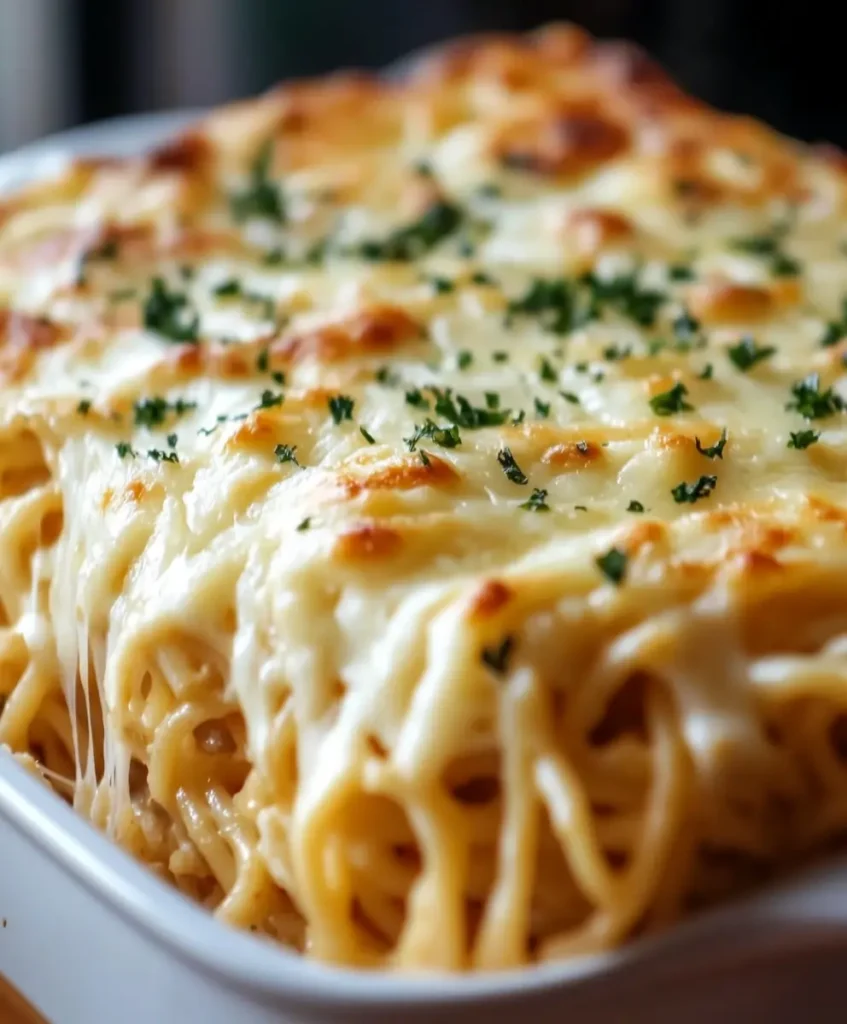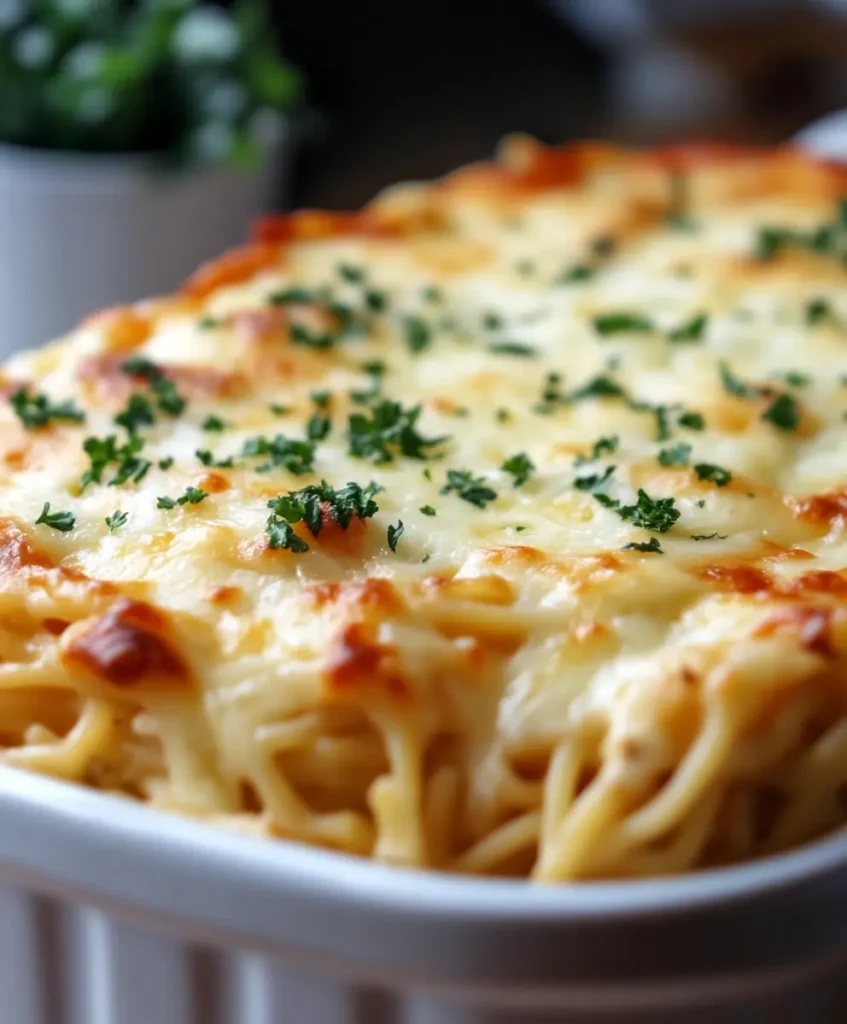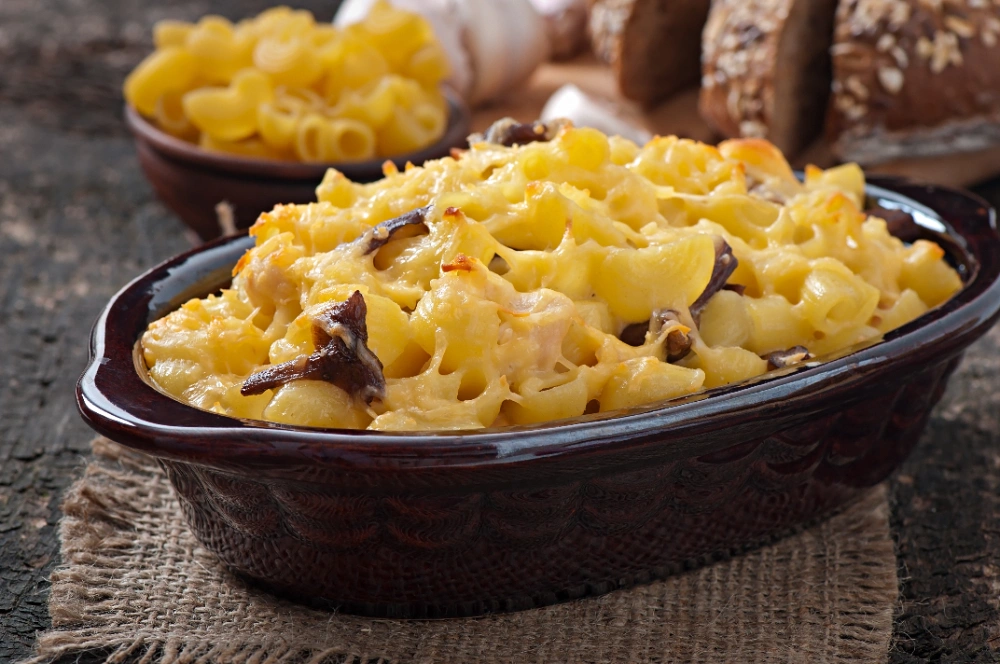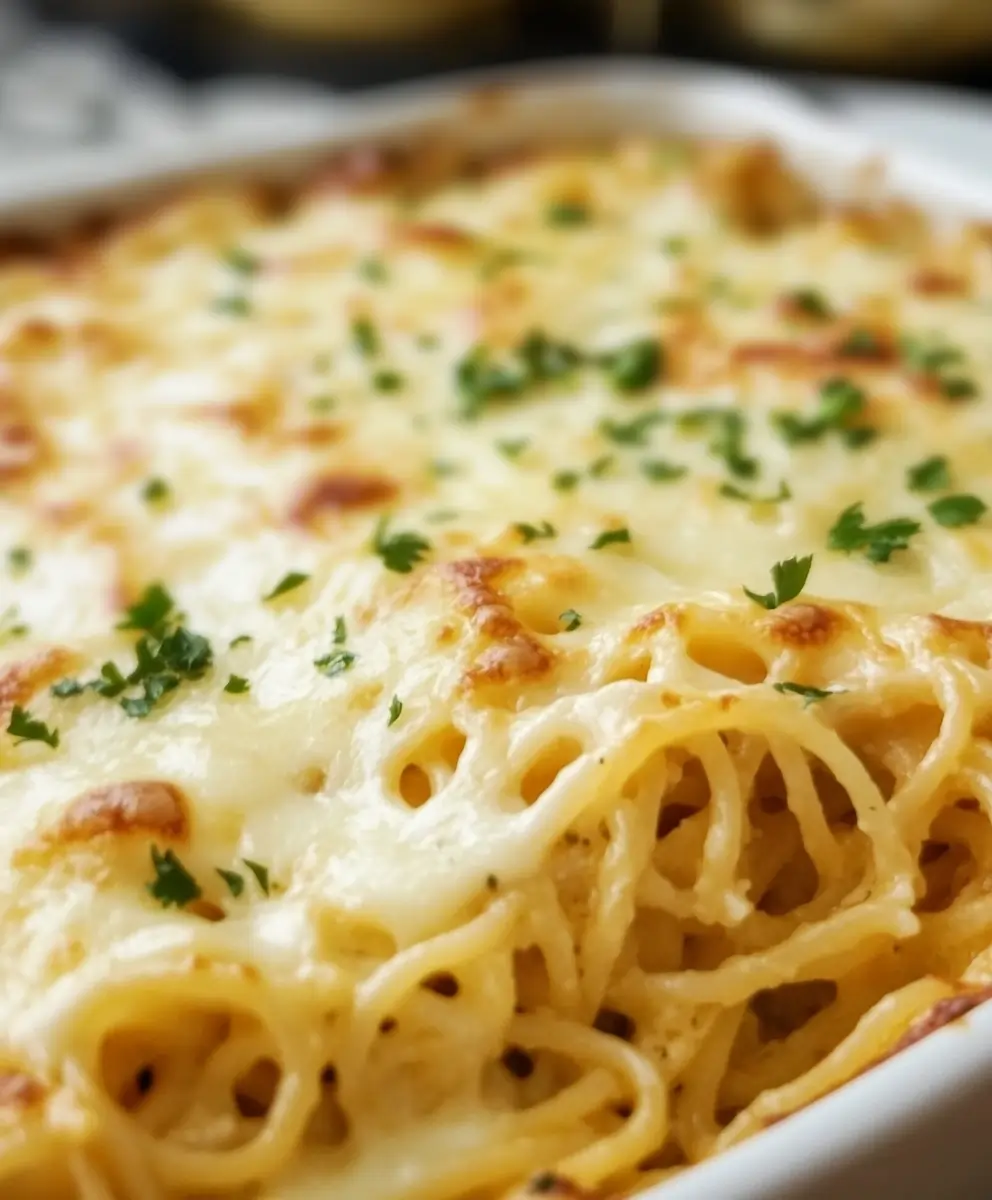What Is Nudel Gratin?
Nudel gratin is a delightful dish that combines pasta, creamy sauce, and a crispy topping. This dish is popular in various cuisines, particularly in European cooking. Typically, the base features cooked noodles that mix with a rich, flavorful sauce made from cheese, cream, or béchamel. Next, you finish the dish with a layer of breadcrumbs or cheese and bake it until golden brown.
Additionally, nudel gratin can be customized with a variety of ingredients. For instance, it may include vegetables, meats, or seafood, enhancing both its flavor and nutritional profile. This versatility not only appeals to diverse palates but also makes it an ideal choice for family meals or gatherings. Thus, nudel gratin stands out as a comforting dish that satisfies both the appetite and the heart.
History of Nudel Gratin
The history of nudel gratin traces back to traditional European culinary practices, particularly in France, where chefs first popularized gratins. The term “gratin,” originating from French, refers to a dish that chefs top with a browned crust, and over centuries, cooks have evolved nudel gratin into the beloved dish we know today.
It reflects the influence of various culinary traditions, including Italian pasta dishes and German casseroles.
In the early 19th century, chefs began experimenting with different types of pasta combined with creamy sauces. The dish gained momentum as home cooks sought to create comforting meals that could feed a crowd. As a result, nudel gratin became synonymous with family gatherings and festive occasions. Over the years, numerous regional variations have emerged, showcasing local ingredients and culinary techniques.
For a classic take on this dish, explore this traditional nudel gratin recipe, which highlights its rich and savory qualities.

Key Ingredients for Perfect Nudel Gratin
To create a delicious nudel gratin, certain key ingredients are essential. These components work together to provide the dish with its characteristic flavor and texture. Here are the primary ingredients to consider:
- Pasta: Use a variety of noodles, such as macaroni, penne, or fusilli, as they hold the sauce well.
- Sauce: A rich, creamy béchamel or cheese sauce is crucial for binding the ingredients together.
- Cheese: Incorporating cheeses like Gruyère, cheddar, or mozzarella adds depth and richness.
- Toppings: Breadcrumbs or additional cheese create a delightful crust when baked.
- Vegetables or Meat: Additions like spinach, mushrooms, or chicken can elevate the dish.
By selecting high-quality ingredients, home cooks can ensure their nudel gratin is both flavorful and satisfying.
For those exploring gluten-free options, consider this gluten-free nudel gratin variation that maintains the dish’s classic charm while accommodating dietary preferences.
How to Make Nudel Gratin at Home
Making nudel gratin at home is a straightforward process that allows for creativity and personalization. Follow these essential steps to prepare this comforting dish:
- Cook the Pasta: Begin by boiling the pasta in salted water until al dente. This ensures the noodles retain their structure during baking.
- Prepare the Sauce: In a saucepan, melt butter, then whisk in flour to create a roux. Gradually add milk while stirring until the sauce thickens. Incorporate cheese until melted.
- Combine Ingredients: Mix the cooked pasta, sauce, and any additional ingredients in a large bowl.
- Transfer to Baking Dish: Pour the mixture into a greased baking dish, then top it with breadcrumbs and extra cheese.
- Bake: Bake the nudel gratin in a preheated oven at 180°C (350°F) for about 25-30 minutes, or until golden and bubbly.
Ultimately, this simple method results in a dish that is sure to please family and friends.
For added inspiration, this comprehensive guide to gratins explores creative variations and techniques.
Nutritional Benefits of Nudel Gratin
Nudel gratin provides several nutritional benefits, making it a worthwhile addition to any meal plan. While it is often viewed as a comfort food, it can also be made healthier with the right ingredients.
For instance, using whole-grain pasta increases fiber content, which supports digestive health. Additionally, incorporating vegetables such as broccoli or spinach boosts vitamins and minerals. A protein source, like chicken or beans, can enhance the dish’s satiating qualities, providing essential amino acids.
However, moderation is key, as nudel gratin can be rich due to cheese and cream. To balance this, consider serving smaller portions alongside a fresh salad. This approach not only enhances the meal’s nutritional profile but also complements the flavors of the nudel gratin beautifully.
Pairing Suggestions for Nudel Gratin
Pairing nudel gratin with the right side dishes and beverages can elevate the dining experience. Here are some suggestions to consider:
- Salads: A refreshing green salad with a light vinaigrette contrasts nicely with the richness of nudel gratin.
- Vegetables: Roasted or steamed vegetables add color and nutrients to the plate.
- Bread: A crusty baguette or garlic bread can be a delightful addition to soak up the sauce.
These pairings can create a balanced and satisfying meal, enhancing the overall enjoyment of nudel gratin.
Common Mistakes to Avoid When Making Nudel Gratin
While preparing nudel gratin may seem simple, there are common mistakes that can hinder the final outcome. Here are some pitfalls to avoid:
- Overcooking the Pasta: Cooking pasta too long can lead to a mushy texture. Aim for al dente.
- Insufficient Sauce: Not using enough sauce can result in a dry dish. Ensure the pasta is well-coated.
- Skipping the Topping: A good crust is essential for texture. Don’t forget the breadcrumbs or cheese topping.
- Underbaking: Failing to bake long enough can leave the dish unappetizing. Ensure it is bubbly and golden.
By being mindful of these mistakes, home cooks can achieve a delicious nudel gratin that impresses.

Storing and Reheating Nudel Gratin
Storing and reheating nudel gratin properly ensures that leftovers maintain their quality and flavor. Here are some tips for effective storage:
- Cooling: Allow the nudel gratin to cool completely before storing it. This prevents condensation, which can make it soggy.
- Containers: Use airtight containers to protect the dish from freezer burn or drying out in the refrigerator.
- Refrigeration: Store leftovers in the fridge for up to three days. For longer storage, consider freezing the dish.
- Reheating: To reheat, cover with aluminum foil and bake at 180°C (350°F) until warmed through. This helps retain moisture.
By following these storage and reheating guidelines, nudel gratin can be enjoyed even after the initial meal.
Nudel Gratin for Special Occasions
Nudel gratin serves as both a comforting everyday dish and a fantastic choice for special occasions. Its versatility allows you to adapt it for various festive events. For instance, during holiday gatherings, you can incorporate seasonal ingredients like roasted butternut squash or caramelized onions for a unique twist. Additionally, you can make nudel gratin in individual portions for elegant dinner parties, making serving easy and visually appealing.
Moreover, you can pair the dish with a festive beverage, such as sparkling cider, to enhance the celebratory atmosphere. Ultimately, nudel gratin can become the centerpiece of special occasions, satisfying guests with its rich flavors.
FAQ’s
What is the difference between au gratin and gratin?
The terms au gratin and gratin often get used interchangeably, but they have slight differences. Au gratin specifically refers to dishes topped with a browned crust, usually made from breadcrumbs or cheese, and baked until golden. On the other hand, gratin is a broader term that includes any dish cooked in a shallow dish and topped with a crispy layer. While all au gratin dishes are considered gratin, not all gratin dishes have the classic browned topping of au gratin.
What makes something a gratin?
For a dish to be called a gratin, it must cook in a shallow dish and usually have a topping that turns brown while baking. This topping can include cheese, breadcrumbs, or both, creating a crispy texture and boosting the flavor. Plus, the main ingredients in a gratin can vary widely, including vegetables, pasta, or meat, making it versatile in its preparation.
Is gratin unhealthy?
Whether people think a gratin is unhealthy mostly depends on its ingredients and portion sizes. Traditional gratins often have rich ingredients like cheese, cream, and butter, which can increase calories and fat. However, you can make gratins healthier by adding more vegetables, using low-fat dairy options, or swapping whole grains for refined pasta. Overall, being moderate and making smart ingredient choices can help you enjoy gratins as a balanced part of your diet.
What is the cooking technique of gratin?
The cooking technique of gratin involves layering ingredients in a shallow dish, covering them with a topping, and then baking until the top is golden and crispy. The process typically includes the following steps:
- Preparation: Ingredients are usually pre-cooked or blanched.
- Layering: The base ingredients are arranged in a shallow baking dish.
- Topping: A mixture of cheese, breadcrumbs, or both is spread evenly over the top.
- Baking: The dish is baked in the oven until the topping is browned and the ingredients are heated through.
This technique creates a harmonious blend of flavors and textures, with a crispy exterior contrasting the creamy or tender interior.
What do Italians call casserole?
In Italy, the term for casserole is “teglia” or “casseruola.” Both terms refer to the baking dish itself, while the word “casseruola” can also denote the dish prepared within it. Italian casseroles often feature layers of pasta, meat, and vegetables, reflecting regional culinary traditions.
What do the French call a casserole?
In French cuisine, people refer to a casserole as “casserole.” This term describes both the cooking vessel and the dish prepared inside it. Cooks create French casseroles using a variety of ingredients, such as meats, vegetables, and beans, and they typically cook these dishes slowly to develop rich flavors.
The concept of casserole is integral to French home cooking and comfort food.

Final Thoughts on Nudel Gratin
In conclusion, nudel gratin is a versatile and satisfying dish that can be enjoyed in various contexts, from casual family dinners to elegant celebrations. By understanding its history, key ingredients, and preparation methods, home cooks can create a delicious version that suits their preferences.
Additionally, being aware of nutritional benefits, pairing suggestions, and common preparation mistakes can enhance the overall experience. Ultimately, whether enjoyed on a cozy night in or as part of a festive gathering, nudel gratin remains a beloved dish that brings comfort and joy to the table.


2 thoughts on “Nudel Gratin Recipe: Comfort Food Made Easy”